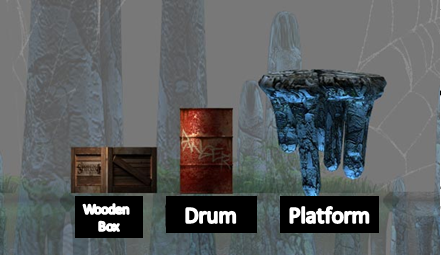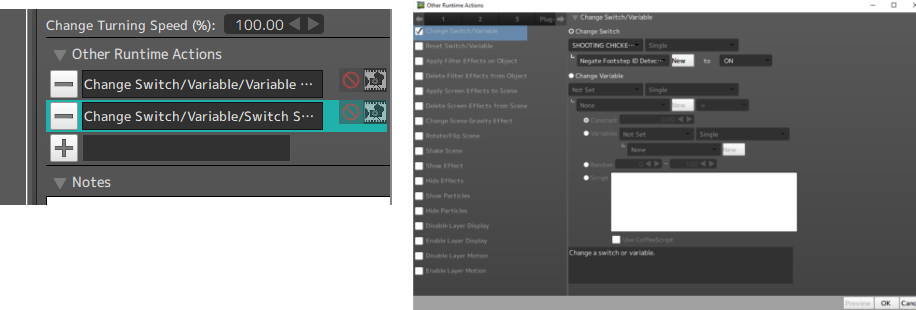3.Footstep Sound EffectsChanging Footsteps According to the Scaffolding Objects
So we've set the footsteps to change depending on the terrain, but there's still one problem to address; how to handle when the characters are standing on top of an Object. If the footstep sounds don't also change when the character is on top of an Object, it will seem strange.

Unlike tiles, these Objects cannot be assigned an area ID. When not in contact with a Sound Effect Detection ID tile, footstep Objects are assigned an area setting variable of -1. As there is no -1 footstep ID, no footstep sound will be played. It's for this reason that there needs to be a footstep ID included in the common variables; a footstep ID needs to exist for when the characters are on top of Objects.

Prepare an action that defines the footstep ID when on top of an Object. Set the Link Condition for this Action to be when the player character comes from above. In Shooting Chicken, the condition is set as when the player character's Wall Detection comes in contact with the top of the Object's Wall Detection. This completes the basic process for when the character is on an object.

In the Other Runtime Actions section, the footstep ID that matches the Object material is assigned
to the footstep ID variable. However, at this point the area settings are in effect and the footstep
sound effect will not be played.
At this point it's necessary to set the "Negate Footstep ID Detection" switch. This makes the sound
effect detection ID on the tile invalid.


When the "Negate Footstep ID Detection" switch is set to ON for the footstep object, the footstep ID becomes invalid for the action, and the Common Variable footstep ID is not assigned as the tile's sound effect detection ID. The footstep ID associated with the object is now in effect.